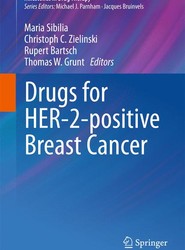(To see other currencies, click on price)
MORE ABOUT THIS BOOK
Main description:
Angiotensin converting enzyme inhibitors (ACEI) represent the first class of antihypertensive agents that was designed and developed on the basis of a well-defined physiopathological axis of arterial hypertension, a vascular dis order that is now becoming one of the major causes of morbidity/mortality, not only in developed societies but also in the highly populated developing coun tries [1]. CAPTOPRIL, the prototype of the "PRIL" family, which now comprises more than 40 molecule-species, was quite hazardous and the clinical develop ment almost failed when serious side-effects were reported in an alarmist fash ion in reputable scientific journals, such as the New England Journal of Medicine and Lancet. Squibb & Sons came very close to withdrawing CAPTOPRIL from clinical investigation [2]. However, after re-examination of the data obtained from different categories of patients and appropriate dose-adjustments, the clinical use of CAPTOPRIL turned out to be revolutionary. The prototype, as well as other members of the "PRIL" family became the starting point for numerous basic and clinical research programs, focusing on the interactions of ACEI with the kinin, endothelin, and nitric oxide systems, and the contribution of the receptors for AT I, AT 2, bradykinin Bland B , ETA and ET B to the pharmacological actions 2 of the respective peptides. This research activity led to the development of new pharmacological agents, such as the angiotensin receptor antagonists and, more recently, the neutral endopeptidase inhibitors. In the near future, bradykinin receptor antagonists also will be available to modulate ACEI phar macological actions.
Contents:
The history of inhibitors of angiotensin converting enzyme.- Genetics of the renin-angiotensin-aldosterone system and risk of arterial disease.- Crosstalk between ACE inhibitors, B2 kinin receptor and nitric oxide in endothelial cells.- Interactions between the ACE and the endothelin pathway.- Evaluative and epidemiological approaches of ACE therapy.- The role of ACE inhibition in heart failure.- Angiotensin converting enzyme inhibition in the microcirculation.- Arterial structure and function and blockade of the reninangiotensin system in hypertension.- The contribution of angiotensin-converting enzyme (ACE) to the metabolism of kinins (bradykinin and des-Arg9-bradykinin) and effect of ACE inhibitors on their in vitro and in vivo metabolism.- Role of the renin-angiotensin system on the central and peripheral autonomic nervous system.- Dual inhibitors of angiotensin converting enzyme and neutral endopeptidase.- Pharmacodynamics, tissue-specificity of ACE inhibitors.- Effect of angiotensin converting enzyme inhibition on thirst and salt-appetite.- ACE and diabetes.
PRODUCT DETAILS
Publisher: Springer (Birkhauser Verlag AG)
Publication date: September, 2012
Pages: 187
Weight: 357g
Availability: Available
Subcategories: General Practice
From the same series













































